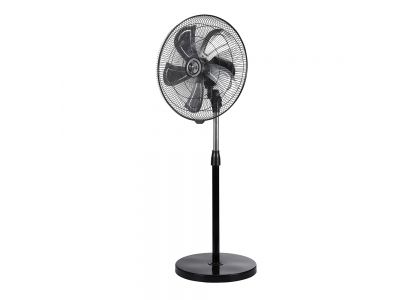
How a Pedestal Fan Works
Design
Pedestal fans are also considered oscillating fans. They have an adjustable metal stand so the head of the fan can be set anywhere from 2 to 4 feet off the ground. Also, the head connects to the pedestal on a platform which can be angled up or down. Inside, the fan head is comprised primarily of an alternating current electric motor with a secondary output which attaches to a worm gear at the base of the platform.
Single Speed Fans
Single speed pedestal fans primarily use a single-phase AC induction motor. The fan blade is attached to a spindle which extends into the motor. Inside the motor, there are two parts. The spindle, which ends in a free-spinning piece of magnetized iron, is known as the rotor. It splits by means of a CV joint so that a secondary spindle extends down from the motor to rest against the worm gear in the base. Sitting on either side are the two halves of what is known as the stator. Electricity is passed through both sides of the stator.
In proximity to one another, the ends of the stator create a shifting magnetic field, the poles of which change between positive and negative as the electricity continues to flow. Sitting in the center of this magnetic field, the rotor is forced to spin, turning both the fan blade and causing the fan to oscillate on its stand.
Multi-Speed Fans
Multi-speed pedestal fans are a little more complex, using a voltage regulator connected to a single-phase AC synchronous motor. Because of its complexity, the fan head is bulkier, and the CV joint connecting the fan head spindle to the worm gear spindle is placed outside the motor, though still within the fan’s plastic casing. In this case, the rotor is not a single piece of metal, but a copper cylindrical cage called a squirrel cage that sits just within the stator, which is of the same squirrel cage design.
The voltage regulator controls how much electricity reaches the stator and rotor; the more power the faster the speed. Also, rather than splitting the available current evenly, slightly less power is sent to the rotor by means of a smaller gauge wire. This difference in electrical potential between rotor and stator generates a magnetic field, causing the rotor to spin and power the fan.